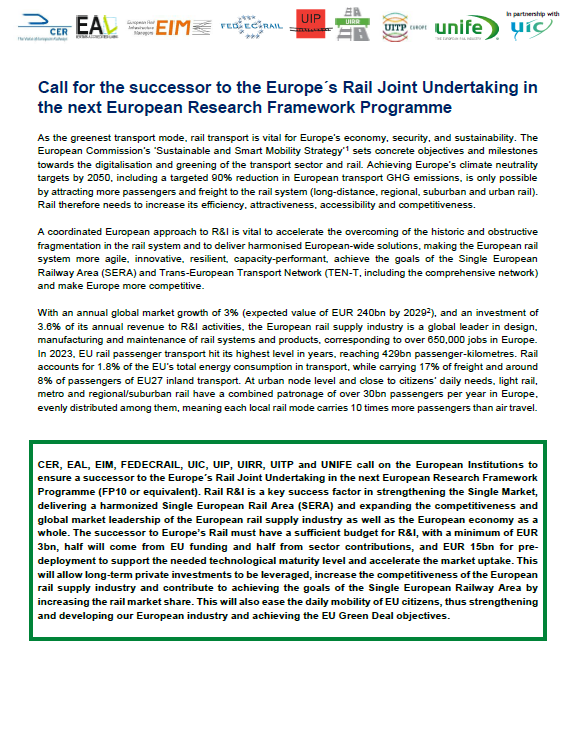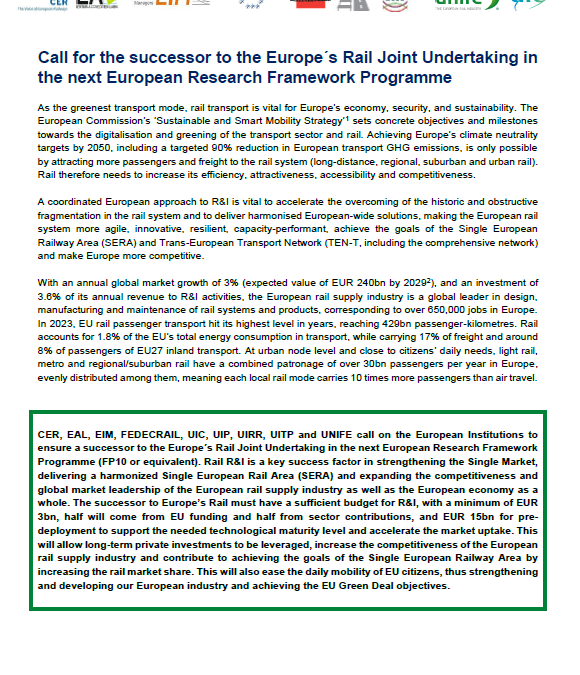Other Publications
The European rail sector representative organisations CER, EAL, EIM, FEDECRAIL, UIC, UIP, UIRR, UITP and UNIFE have united to call on the European Institutions to ensure a successor to the Europe´s Rail Joint Undertaking, as part of the next European Research Framework Programme (FP10 or equivalent).
Rail sector representative organisations are asking for an investment of €3 billion in future rail research to establish the successor of the Europe´s Rail Joint Undertaking, as part of the European Commission’s forthcoming proposals on the next Multiannual Financial Framework.
The focus would include developing new technologies in all rail market segments, while also building upon solutions developed with the support of Europe´s Rail Joint Undertaking, such as the European Rail Traffic Management System (ERTMS), Future Railway Mobile Communications System (FRMCS) and the Digital Automatic Coupling (DAC).
These technologies will improve services for passengers and goods, making the European rail network more reliable, while providing a pathway to increasing local, long distance and cross-border travel and driving a freight modal shift from trucks to rail. Further to this, enhancing European rail capabilities through better technology, will also provide protection as global supply chains remain under significant strain.
Rail R&I is a key factor in strengthening the Single Market, delivering a harmonised Single European Rail Area (SERA), and expanding the competitiveness and global market leadership of the European industry across many sectors.
On top of this research and innovation program, the rail sector representative organizations suggest a corresponding pre-deployment plan. This will include a pathway to enable these top-of-the-line technologies – such as FRMCS, DAC, ATO (Automatic Train Operation) or ERTMS – and ensure they are deployed on more rail networks across the EU.
These technologies were developed in the previous rail Joint Undertaking ‘Shift2Rail’, and reached a more mature level during the current format of Europe´s Rail Joint Undertaking. They are also mentioned in the Draghi Report on EU Competitiveness as a means to making the EU economy more productive.
Rolling out these technologies are vital to not only the viability of a future High Speed Rail plan between European capitals, but also achieving the Single European Railway Area (SERA), ensuring the completion of the Trans-European Transport Network (TEN-T) including its core and comprehensive networks.
Read the full Position Paper here :



